- Blogs
- Insulation Board vs Insulation Roll: A Comparative Analysis
Insulation Board vs Insulation Roll: A Comparative Analysis

Insulation is one of the most important aspects of any building project, whether it is a new construction or a renovation. Insulation helps to keep the indoor temperature comfortable, reduce energy bills, improve soundproofing, and protect the environment. However, not all insulation materials are the same. There are different types, forms, and thicknesses of insulation that suit different purposes and applications.
In this article, we will compare and contrast two common forms of insulation: insulation board and insulation roll. We will explain what they are, how they work, what are their advantages and disadvantages, and how to choose the best one for your project. We will also provide some examples of insulation products that you can buy online from our website.
What is an Insulation Board?
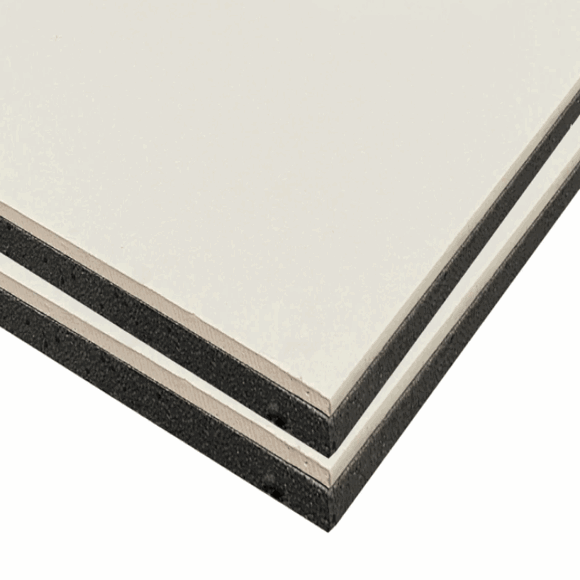 Insulation board, also known as rigid insulation, is a form of insulation that comes in pre-cut panels or sheets of various sizes and thicknesses. Insulation boards are usually made of synthetic materials, such as polystyrene, polyurethane, or polyisocyanurate, that have high thermal resistance and low moisture absorption. Insulation boards can also be made of natural materials, such as hemp, wood, or cork, that have lower environmental impact and higher breathability.
Insulation board, also known as rigid insulation, is a form of insulation that comes in pre-cut panels or sheets of various sizes and thicknesses. Insulation boards are usually made of synthetic materials, such as polystyrene, polyurethane, or polyisocyanurate, that have high thermal resistance and low moisture absorption. Insulation boards can also be made of natural materials, such as hemp, wood, or cork, that have lower environmental impact and higher breathability.
Insulation board works by creating a continuous layer of insulation that reduces heat transfer through conduction, convection, and radiation. Insulation boards can be used for various applications, such as walls, floors, roofs, basements, and attics. Insulation board can be installed between studs, joists, or rafters, or on top of existing insulation. Insulation boards can also be attached to the external or internal surface of the building envelope, creating a thermal break that prevents thermal bridging.
What is Insulation Roll?
Insulation roll, also known as blanket insulation, is a form of insulation that comes in long rolls or slabs of various widths and thicknesses. Insulation rolls are usually made of fibrous materials, such as glass wool, mineral wool, or sheep wool, that have low thermal conductivity and high sound absorption. Insulation roll can also be made of reflective materials, such as foil, that have low emissivity and high reflectivity.
Insulation roll works by trapping air within its fibres or layers, creating a barrier that reduces heat transfer through conduction and convection. Insulation roll can be used for various applications, such as walls, floors, roofs, basements, and attics. Insulation roll can be installed between studs, joists, or rafters, or on top of existing insulation. Insulation rolls can also be laid over the external or internal surface of the building envelope, creating a radiant barrier that reflects heat.
What are the Advantages and Disadvantages of Insulation Board and Insulation Roll?
Both insulation board and insulation roll have their own pros and cons, depending on the type, form, and thickness of the insulation, as well as the specific requirements and conditions of the project. Here are some of the main advantages and disadvantages of each form of insulation:
Insulation Board
Advantages
-
Insulation board has a lower U-value (heat transfer coefficient) than insulation roll, meaning it can prevent more heat loss or gain through the building envelope.
-
Insulation board is more durable and stable than insulation roll, meaning it can resist compression, sagging, and deterioration over time.
-
Insulation board is more resistant to moisture, mould, and pests than insulation roll, meaning it can protect the building structure and indoor air quality better.
-
Insulation board is easier and faster to install than insulation roll, especially for large or complex areas, as it does not require cutting, fitting, or stapling.
Disadvantages
-
Insulation board is more expensive than insulation roll, both in terms of material and labour costs, as it requires more specialised equipment and skills to install.
-
Insulation board is more rigid and inflexible than insulation roll, meaning it can be difficult to fit around curves, corners, or irregular shapes, leaving gaps or cracks that reduce its effectiveness.
-
Insulation board is more flammable than insulation roll, especially if it is made of synthetic materials, meaning it can pose a fire hazard if not properly protected or installed.
-
Insulation board is more environmentally unfriendly than insulation rolls, especially if it is made of synthetic materials, meaning it can have a higher carbon footprint and lower recyclability.
Insulation Roll
![Insulation Roll]() Advantages
Advantages
-
Insulation roll is cheaper than insulation board, both in terms of material and labour costs, as it requires less specialised equipment and skills to install.
-
Insulation roll is more flexible and adaptable than insulation board, meaning it can fit around curves, corners, or irregular shapes, leaving no gaps or cracks that reduce its effectiveness.
-
Insulation roll is less flammable than insulation board, especially if it is made of natural materials, meaning it can pose less fire hazard if properly protected or installed.
-
Insulation roll is more environmentally friendly than insulation board, especially if it is made of natural materials, meaning it can have a lower carbon footprint and higher recyclability.
Disadvantages
-
Insulation roll has a higher U-value than insulation board, meaning it can prevent less heat loss or gain through the building envelope.
-
Insulation roll is less durable and stable than insulation board, meaning it can compress, sag, or deteriorate over time.
-
Insulation roll is less resistant to moisture, mould, and pests than insulation board, meaning it can damage the building structure and indoor air quality worse.
-
Insulation roll is harder and slower to install than insulation board, especially for small or complex areas, as it requires cutting, fitting, and stapling.
How to Choose the Best Insulation for Your Project?
As you can see, there is no definitive answer to which form of insulation is better, as it depends on various factors, such as the type, form, and thickness of the insulation, as well as the specific requirements and conditions of the project. However, here are some general guidelines to help you choose the best insulation for your project:
-
Consider the purpose and location of the insulation. Different applications and areas may require different levels and types of insulation. For example, roofs and walls may need lower U-values than floors and basements, while external and internal surfaces may need different forms and thicknesses of insulation.
-
Consider the available space and budget for the insulation. Different forms and thicknesses of insulation may require different amounts of space and cost. For example, an insulation board may be more suitable for limited space and higher budget, while an insulation roll may be more suitable for ample space and lower budget.
-
Consider the installation and maintenance of the insulation. Different forms and thicknesses of insulation may require different levels of difficulty and time to install and maintain. For example, an insulation board may be easier and faster to install and maintain than an insulation roll, but it may also require more specialised equipment and skills.
-
Consider the performance and durability of the insulation. Different forms and thicknesses of insulation may have different effects on the thermal comfort, energy efficiency, soundproofing, and environmental impact of the building. For example, an insulation board may have higher thermal resistance and lower heat transfer than an insulation roll, but it may also have lower breathability and higher flammability.
Examples of Insulation Products from Buy Insulation Online
At Buy Insulation Online, we offer a wide range of insulation products, both in board and roll forms, that can suit different purposes and applications. Here are some examples of insulation products that you can buy online from our website:
Insulation Boards
-
Warmline EPS Insulated Plasterboard: Ranging from 22mm to 50mm thickness, is a versatile solution to enhance thermal efficiency in walls, roofs, and ceilings. The laminates feature a 9.5mm plasterboard bonded to expanded polystyrene foam insulation, providing excellent insulation properties. Perfect for new builds and refurbishment projects, it complies with Part L of building regulations, ensuring energy efficiency. Easy to install with standard tools, it reduces heat loss, cutting energy bills effectively. Suitable for walls, roofs, and ceilings, it's a cost-effective way to upgrade and insulate spaces.
-
Knauf XPS Thermal Laminate Plus Insulated Plasterboard: This is the best-selling insulated plasterboard that seamlessly combines extruded polystyrene with 9.5mm Knauf drywall. This unique thermal solution offers superior compressive strength, exceptional thermal insulation, and a built-in vapour barrier. Ideal for ceilings and walls in new builds or refurbishments, it ensures compliance with building regulations and reduces energy expenditure, offering quick payback periods. With a low thermal conductivity of 0.033W/mK, it maximizes room space and facilitates dot and dab installation. Experience instant energy savings, superior performance, and efficient space utilization with Knauf XPS Laminate Plus.
-
Knauf Sound Panel Acoustic Plasterboard with Tapered Edge: It enhances your living space by minimizing unwanted noise. With dimensions of 2400 x 1200 x 12.5mm, these high-density gypsum boards offer superior soundproofing for walls, ceilings, and partitions. Designed for easy installation without the need for specialized tools, the blue-colored panels boast excellent acoustic insulation, making them ideal for residential applications. Complying with BS EN 520 Types A and D, these cost-effective boards are crafted with British gypsum and feature a tapered edge for seamless integration. Ensure a quieter and more comfortable environment with Knauf's reliable soundproof insulation solution.
-
Xtratherm Thin-R Thermal Liner: This offers a seamless solution for high thermal insulation and drylining in one efficient operation. With a closed-cell structure that effectively limits heat transfer and a low thermal conductivity PIR core, it optimally retains heat. Ideal for new builds or refurbishment projects, the insulated plasterboard features a composite kraft facing bonded to a 12.5mm tapered edge plasterboard, meeting EN 13165 standards. Its dual application saves space and costs, providing effective moisture resistance while resisting mold and fungi growth. This environmentally friendly product, with A+ ratings from BRE, is durable, lasts a building's lifetime, and serves as a gas and vapor-tight barrier.
-
Hemp Insulation Boards: This is the eco-friendly revolution in construction. Crafted from natural hemp straw with a mineral binding agent, these 19mm thick boards offer unparalleled thermal conductivity at just 0.115 W/mK, minimizing heat loss and cutting energy bills. Say goodbye to traditional plasterboards; these hemp fibre boards are water-resistant, mold-resistant, and fire-resistant, ensuring a cleaner, healthier, and more sustainable living space. Ideal for internal applications, including walls and bathrooms, they promote healthy living conditions and boast easy installation.
-
Cembloc Cembacker Cement Tile Backer Board: This offers a superior solution for tile installations with its high-quality cement tile backer board. Engineered from a blend of cement, sand, and reinforcing fibers, it provides a robust foundation for tiles on walls and floors, outperforming plasterboard and plywood with excellent moisture, weather, and fire resistance. The dimensionally stable board, A1 rated for safety, ensures durability in wetrooms. With waterproof and fireproof properties, it safeguards against seasonal changes, sunlight, and extends insulation life. Easy to assemble and cut, it's an eco-friendly choice without harmful materials. Ideal for wetrooms, wall finishes, pre-fabricated buildings, and various other applications.
Insulation Rolls
-
EcoQuilt Expert Multifoil Insulation: A top-tier multifoil insulation solution, boasts six layers of reflective aluminum foil designed to deliver unparalleled insulation performance for homes. This 10-meter foil insulation roll, available in widths of 1.2M and 1.5M, excels in reflecting radiant heat and preventing air heat transfer. Its lightweight, flexible design facilitates easy installation for DIYers, making it ideal for various applications like lofts, roofs, conservatories, sheds, and more. Beyond its efficiency, this eco-friendly insulation improves air quality, acting as a protective vapor barrier to reduce condensation. Elevate your home's comfort and energy efficiency with this high-performing foil insulation, offering a remarkable balance between cost and performance.
-
Knauf Earthwool Glass Mineral Wool Acoustic Insulation Roll APR: This offers a cutting-edge solution to combat noise pollution and enhance thermal efficiency in buildings. Crafted from fibreglass using Knauf's innovative ECOSE Technology, this acoustic roll not only meets stringent building regulations but also excels in soundproofing. Its unique fibre matrix efficiently traps sound waves, converting them into heat energy for significant noise reduction. With Euroclass A1 non-combustibility, lightweight design, and easy installation, these rolls prove ideal for various applications, from separating walls and floors to timber and metal stud partitions. Environmentally friendly and durable, Knauf's acoustic insulation roll ensures a sustainable and effective soundproofing solution.
-
Sheepwool Insulation Optimal: Isolena's Sheepwool Insulation Optimal Range is the epitome of green insulation, crafted from 100% natural sheep wool. With a thermal conductivity of 0.038 W/mK, it ensures year-round coziness by restricting heat transfer through walls, floors, and roofs. This versatile insulation is ideal for pitched roofs, floor and ceiling insulation, internal and external walls, and more. Treated with Ionic Protect, it repels pests and lasts indefinitely. Beyond its fire and acoustic insulation capabilities, this medium-density roll purifies the air by removing toxins. Easy to install with a felt backing, it's a safe, breathable, and eco-friendly choice for a healthier living space.
-
Knauf Mineral Wool Loft Insulation Multi-Roll: It offers a versatile and eco-friendly solution for insulating cold lofts with its fibreglass rolls. Utilizing ECOSE Technology for sustainability, these rolls are lightweight, pre-cut for easy installation, and provide exceptional fire resistance, thermal, and acoustic insulation. The open-cell structure efficiently traps heated air, reducing heat loss through roofs. With Euroclass A1 reaction to fire classification and low VOCs, they ensure safety and indoor air comfort. Available in various thicknesses, these rolls are ideal for DIY projects, meeting building regulations effortlessly. Knauf Loft Insulation combines affordability, ease of handling, and performance for effective home insulation.
-
SuperQuilt Mulitfoil Insulation Roll: The YBS SuperQuilt Multifoil Insulation Roll is a high-performance foil insulation solution designed for year-round energy and cost savings. With a unique composition of nineteen foil layers, it offers superior thermal resistance and meets EN16012 standards, NHBC approval, and L1A/L1B 2010 requirements. Ideal for walls, roofs, and various applications, these lightweight rolls are easy to install, effectively reducing heat build-up in summer and providing improved indoor air quality. The versatile 10m rolls, available in 1.2m and 1.5m widths, boast a 40mm thickness and ensure efficient insulation while simplifying installation steps.
-
EcoQuilt Multi-Layered Foil Insulation: EcoQuilt45 Reflective Multifoil Insulation revolutionizes home comfort with its slimline design and exceptional performance. This lightweight insulation, measuring 1.5M x 10M, reflects up to 97% of heat, creating an effective barrier against conduction and convection. Ideal for walls, roofs, and floors in both new builds and retrofits, its 45mm thickness is unobtrusive yet powerful, meeting UK building regulations. Eco-friendly, made from up to 40% recycled materials, and fully recyclable, it contributes to a sustainable future. Save on energy bills while enjoying a cozy home with this versatile, non-toxic insulation solution that's easy to install and meets high standards.
Conclusion
Insulation board and insulation roll are two common forms of insulation that have different characteristics, advantages, and disadvantages. Depending on the purpose, location, space, budget, installation, maintenance, performance, and durability of the insulation, you may choose one or the other, or even combine them for optimal results.
At Buy Insulation Online, we offer a wide range of insulation products, both in board and roll forms, that can suit different purposes and applications. You can browse our website Buy Insulation Online and order online, or contact us for more information and advice. We hope this article has helped you understand the differences between insulation board and insulation roll, and how to choose the best insulation for your project.

Samuel Hitch
Managing Director
Buy Insulation Online.
Leave A Reply
Your feedback is greatly appreciated, please comment on our content below. Your email address will not be published. Required fields are marked *








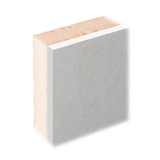
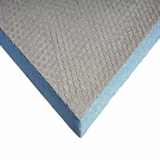
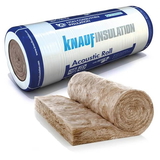
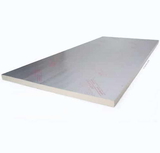
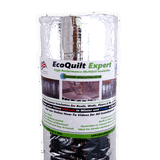


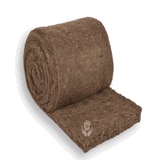
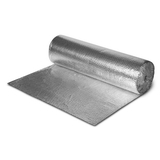

 Advantages
Advantages




































































































































































































































































































































































































































